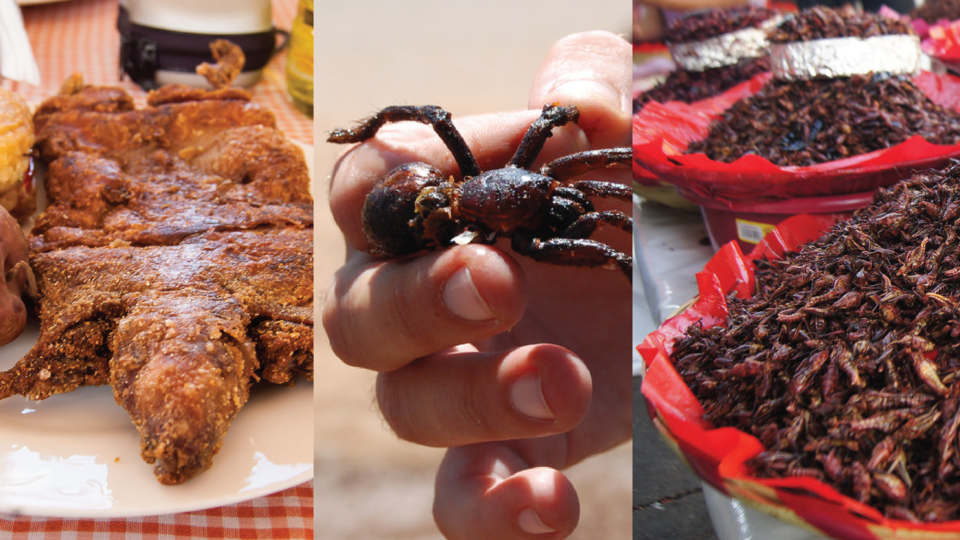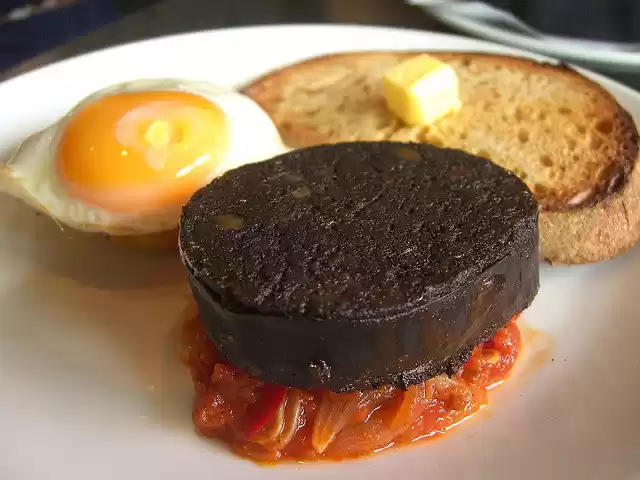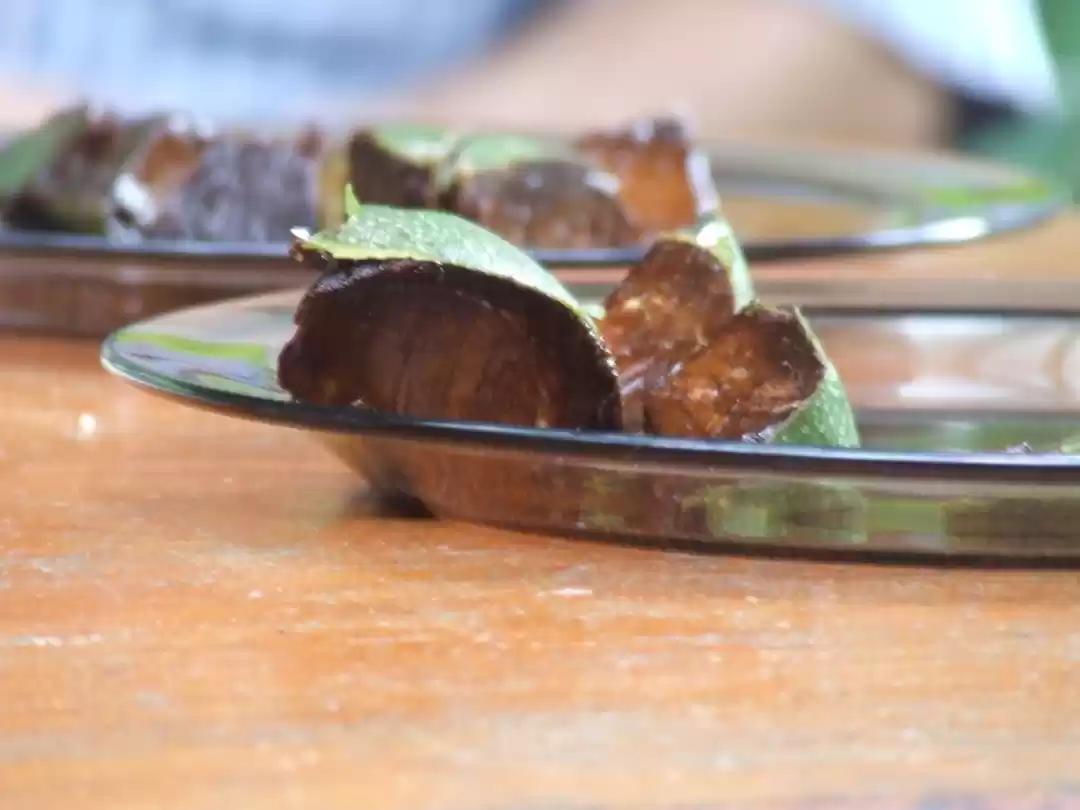
India is a nation full of people obsessed with food. From delectable street food to sugar laden sweet dishes, we take extreme pride in what we eat. At the same time, we're a group of people who don't really believe in experimenting when it comes to food. Sticking to the tried and tested and not stepping out of our comfort zone is a habit every Indian innately has—something that goes on to reflect in our food preferences as well.
On the other hand, for years, people around the world have continued to indulge in food items that include maggots, insects, live reptiles among other freaky things. So if you're someone who believes in pushing the boundaries, sampling one of these 'delicacies' is something that should definitely find a place in your bucket list. Here are the world's ten most extreme foods and where to find them:
1. Durian
In spite of its high nutritional value, Durian is a fruit that is not meant for the faint-hearted. Found in many parts of Southeast Asia, Durian is infamous for its strong smell more than its taste. People have described the odour as a mix of rotten onions, unwashed socks and turpentine amongst other things. The Singapore Government has gone ahead and banned the fruits from its Rapid Mass Transit system, taxis and other modes of public transport! Meanwhile, certain Southeast Asian tribes continue to enjoy the fruit in both its raw as well as cooked form with Durian finding a place in recipes of local delicacies.
Tip: If you really want to try Durian, start off by eating it in its cooked form. Mixing the flesh with sugar and wrapping it in a pancake is one common way to eat durian.
Best time to visit Singapore: February to April
2. Casu Marzu
What would you do if you saw maggots feasting on the cheese in your refrigerator? Throw it in the bin right away, isn't it? That's not how the Italians do it! Casu Marzu or maggot cheese is a pungent variety of cheese savoured in Sardinia, Italy. The cheese is made using sheep milk and live insect larvae which are said to 'enhance' its taste. Locals believe that the more number of maggots in Casu Marzu, the better it tastes.
Tip: Casu Marzu has been in the news for all the wrong reasons with EU claiming that it is against the health regulations norms. However, one can still find Casu Marzu at local cheesemongers in Sardinia.
Best time to visit Sardinia: April to June
3. Rocky Mountain Oysters
Though oysters are enjoyed almost world over, the American version, Rocky Mountain Oysters aren't exactly appetising. A festival favourite, the dish is actually not oyster at all but is rather made by dipping bull testicles in a batter and deep frying them. The western state of Montana in U.S.A. is home to the (in)famous delicacy and digging into them is a tradition of sorts followed by ranchers till date.
Tip: Though one can find Rocky Mountain Oysters in many restaurants in Montana, the best place to try them out is at the annual Testicle Festival.
Best time to visit Clinton: July to September
4. Fugu
Compared to other 'delicacies' on the list, this one actually tastes as well as smells much better. Japan's Fugu or blowfish still manages to find a spot in the world's most extreme foods is only because this is one meal that can actually kill you! Yes, you read that right. The Japanese blowfish' liver, ovaries and skin contain lethal poison which can kill anyone within minutes. There are very few trained chefs across Japan which have the skillset to handle Fugu and its proper serving techniques.
Tip: Since there is no antidote to Fugu's poison, it is advisable to read up well on the place you plan on having Fugu at.
Best time to visit Tokyo: March to May and October to December
5. Chapulines
If you're in a Mexican bar and decide to call for complimentary bar snacks, be sure that you double check before you start eating. Chapulines, more commonly known as grasshoppers are an age old bar snack and taco filling in the Mexican town of Oaxaca. Chapulines are usually consumed after being tossed in chilli and salt. One can find big baskets of these grasshoppers in local markets where locals describe them as popcorn with legs!
Tip: Head to Mercado Benito Juárez in Oaxaca for the best quality chapulines in Mexico.
Best time to visit Oaxaca: April - May and September - October
6. Tarantulas
If you think that eating fried grasshoppers is crazy, Cambodia's obsession with fried tarantulas will shock you, to say the least. The scary looking creatures are put in hot oil till the time they become completely crispy. The dish is seasoned with basic spices and salt before sending it out to local markets and served to diners in bug cafes, the latest extreme eating phenomenon to hit Cambodia.
Tip: While travellers have claimed that tarantula legs still taste decent, the abdomen is something that should only be tried by those who have a stomach of steel.
Best time to visit Skun: November to March
7. Hakarl
Recognised as the national dish of Iceland, Hakarl is exactly the kind of stuff that can make you hate seafood. The delicacy is prepared by burying the meat of Greenland shark inside a pit for two to three months. The meat is then hung on ceilings and left to dry out in the open for a couple of months more. After the fermentation process is complete, Hakarl is served as it is, raw and dried.
Tip: Hakarl should be tried only by those who have a good resistance to smells. Though people claim that the taste is still decent, the smell is atrocious, to say the least.
Best time to visit Reykjavik: June to August
8. Live octopus
Wriggly creatures with scary tentacles struggling for their life on someone's dinner plate. Sounds like a scene from a slasher horror film, right? Well, if you're in South Korea, this is what a normal meal would look like. As hard as it may be to believe, South Koreans actually have a taste for live octopuses—so much so that it is enjoyed both a snack as well as a proper meal.
Tip: Make sure you've removed the octopus' suckers before eating them. If even one of these end up sticking in your food pipe, you'd be inviting big trouble.
Best time to visit Seoul: March to May and September to November
9. Cuy
A animal best identified as being a happy, playful pet finds its way into dinner plates of natives of a small town named Cusco in Peru. Popularly called cuy, guinea pigs are enjoyed in all forms ranging from fried to baked and even roasted. The people of Cusco claim that cuys taste just like chicken but it is the basic thought of having a cute, furry pet on your plate is what takes this one high up on the extremity level.
Tip: Cuys are usually ordered on the basis of front end and back end. Make sure you read up well on what might suit your taste palate and order accordingly.
Best time to visit Cusco: June to October
10. Virgin Boy Eggs
While other food items on the list involve extreme animal cruelty, this one takes it on a completely different level. When it comes to the Chinese, trust them to always push the boundaries even when it involves something as basic as eggs. Residents of Dongyang, a city in the eastern Zhejiang soak chicken eggs in the urine of prepubescent boys, ideally under 10 years old. If you're grossed out already, wait there's more! They go on to boil the eggs in the same urine before making they find their way on to breakfast plates.
Tip: If you want to witness the entire process, head to an elementary school. There are camps put up in schools where kids donate their urine which is then used in the making of the 'delicacy'.
Best time to visit Zhejiang: March - April and September - October
Have you ever tried your hands at something you'd call extreme? Where was it and what was the dish?
Click here and share your exciting travel tales with the Tripoto Community.
Don't forget to check out our YouTube channel for some killer videos that will fill you up with major wanderlust.
Frequent Searches Leading To This Page:-
eating tarantulas in cambodia, fried tarantulas in cambodia, tarantulas of cambodia, tarantulas cambodia food, do they eat tarantulas in cambodia


































